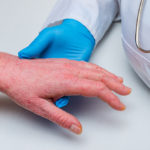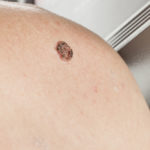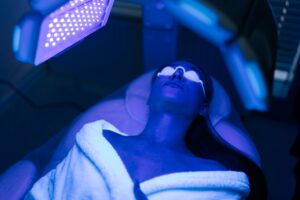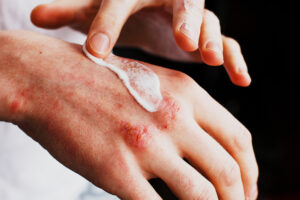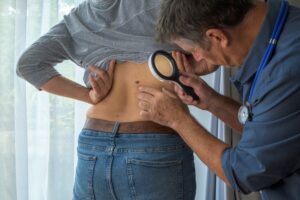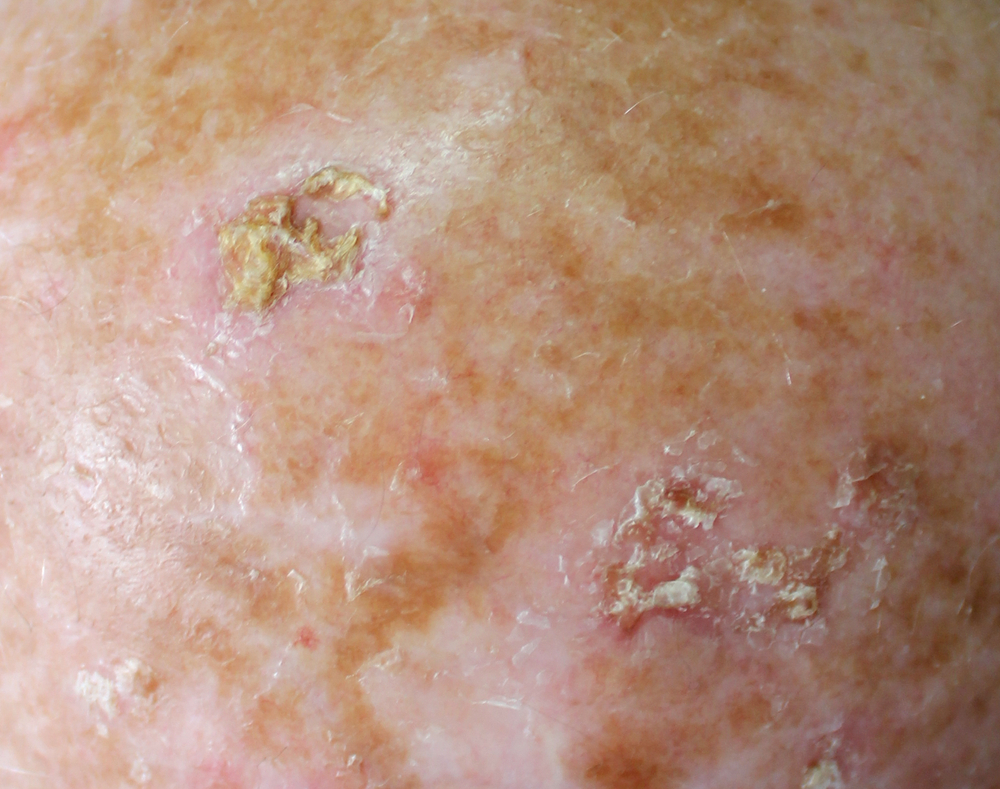
Actinic keratoses, also known as “solar keratosis or AKs”, can develop from excess UV exposure from both natural sun exposure or tanning beds. The resulting UV skin damage commonly appears on the face, neck, forearms, and any other regularly exposed areas of the skin. Since actinic keratoses can appear on the skin in many different colors, sizes, and shapes, accurate identification from a licensed dermatologist is essential if you have any new skin concerns.
How to Identify Actinic Keratoses
Actinic keratosis may be impacting your skin’s health if you notice any rough, scaly, or dry areas of skin with a raised texture. AKs may be red, tan, white, pink, or a combination of colors. These discolorations and texture abnormalities are usually small sections of skin, but depending on the severity of the skin damage, AKs can form larger patches that are noticeably different from the surrounding skin.
Why is it Important to Identify Actinic Keratoses?
While most cases of AK are not cancerous, any form of excess UV exposure increases your risk for skin cancer. If left untreated, anywhere from 1-10% of AKs can eventually mutate into squamous cell carcinoma. Generally, the dermatologist’s recommendation is to treat or remove the damaged tissue as soon as possible, especially if you have a family history of skin cancer, have underlying conditions, or present with other high-risk factors like increased age, lighter skin tone, or immune weakness.
Cryosurgery is a Safe & Effective Treatment Option
Fortunately, there are several safe and effective treatment options for managing actinic keratosis. Unlike topical treatments that can lead to unsightly inflammation and redness, cryosurgery is commonly utilized for its effectiveness, shortened healing times, and overall long-term benefits. Using a targeted liquid nitrogen treatment to neutralize the damaged skin cells, cryosurgery is a reliable preventative treatment option that greatly reduces your risk of developing skin cancer.
After freezing the problematic cells with cryosurgery, most cases of AK are fully treated and cured. As the at-risk cells die and slough off, healthy skin grows back in its place. This proven technique is the most common AK treatment option for good reason; since the specific area is carefully targeted, patients benefit from minimal scarring, appointments are fast and easy, and there are fewer side-effects than other less effective treatments.
Discuss the Best Treatment Options With a Licensed Dermatologist
If you notice any new rough, raised, or discolored patches of skin, don’t wait to seek a professional dermatologist diagnosis. The skin specialists at Pennsylvania Dermatology Specialists have years of experience diagnosing, treating, and providing thorough follow-up skin examinations. Almost every type of skin condition can be safely treated, and with the proven diagnosis and treatment options, you can expect to experience improved skin health, personalized guidance, and lasting peace of mind.
If you’d like to learn more about cryosurgery and why it’s so effective, get in touch with our board-certified dermatologists to learn more. As one of the best Dermatologists in Bucks County, PA, we offer flexible appointments, affordable services, and are committed to verified solutions that promote long-term skin health.

